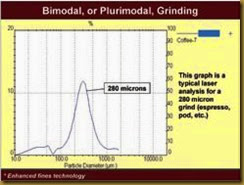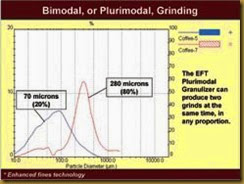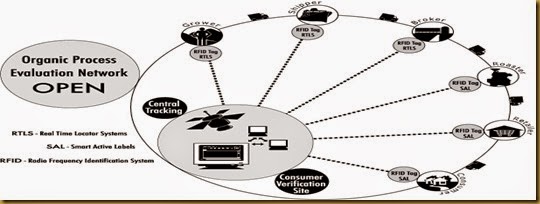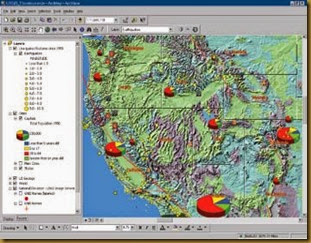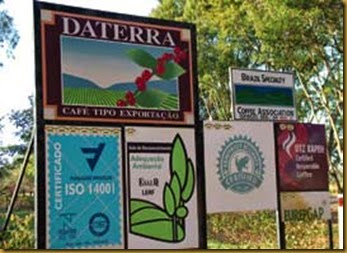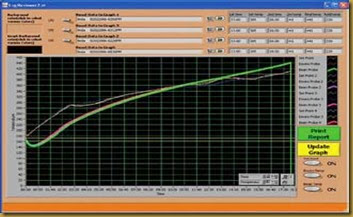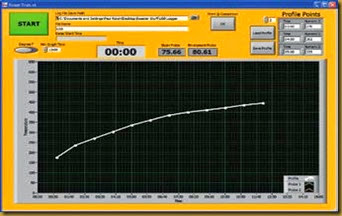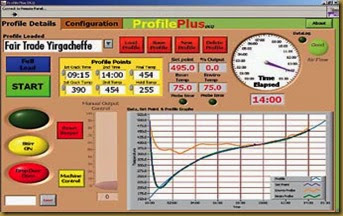AS I SIT HERE putting the finishing touches on this article, my attention is caught by a report on National Public Radio's "Morning Edition" about the correlation between heart attacks and caffeine consumption. The report is on a University of Toronto study that was conducted in Costa Rica to explore whether genetic factors play a role in an individual's susceptibility to caffeine-induced heart attacks.
At first, the report seems like a nice lead-in to this article, which looks at the voluminous amount of research being done on coffee in traditional North American educational institutions. But then the report gets...strange...as in the very next segment--an unrelated report on the economic effects of tuberculosis on underdeveloped countries--an interviewee uses the price of a cup of coffee to illustrate how inexpensively this difficult problem can be overcome. And I am once again reminded of how important coffee is to our world culture.
Coffee, both directly as a food product and indirectly as a language, as a simple source of economic measurement and as an illustration of common relevance to all Americans, is embedded deeply in our culture.
Coffee, as an industry, is a multi-disciplinary undertaking attracting people from many different disciplines: economics, chemistry, agronomy, fine arts, humanities, engineers of all stripes and even the odd nuclear physicist. But it may surprise even experienced roasters to know that there are institutions of higher learning here in the U.S. that actually study coffee, and some that even have whole programs developed around producing and selling coffee. Currently most coffee-related research at United States educational institutions fall into one of three basic categories: health, economics/social science and agricultural/food science.
A Cup of Health
All roasters, if not all Americans, are familiar with the often contradictory health information on the consumption of coffee to human physiology: caffeine is bad for you, caffeine is good for you, lattes will make you fat, the coffee in a latte will help you burn calories, and on and on it goes. As coffee people, most of us could frankly care less about the health effects of coffee, except where it can possibly affect consumer demand. We have been consuming copious amounts of coffee since at least high school and have experienced very few, if any, negative affects so far, with the possible exception of those decidedly sickly feelings of caffeine withdrawal. But health research on coffee could have a huge impact on coffee demand, and for this reason alone, we should be paying attention to these ongoing discoveries.
Coffee and health subjects are extremely varied and cover a wide range of human ailments, both physical and mental. For this reason, if for no other, there are many U.S. research universities looking hard at our favorite drink. Coffee is researched for its possible curative powers for a host of ailments: from different cancers and Alzheimer's disease to gross obesity and severe depression. An inquiring roaster only has to Google coffee and the disease of his choice to find any number of institutions studying coffee's effects on that disease.
As Vanderbilt University Medical Center, home to the Institute for Coffee Studies (ICS), puts it, "Coffee is a complex mixture of potential neutriceuticals" whose chemical composition "is determined by a complex interaction of agricultural factors, roasting, blending, and brewing."
While Nashville, the home of country music, may seem an odd place for serious studies on coffee and health it is, in fact, also the home to ICS, a research organization originally funded by the Association of Coffee Producing Countries (ACPC), the National Coffee Association (NCA) and the All Japan Coffee Association.
As a research organization, ICS's mission is three-fold:
- to systematically investigate the actions of the various compounds found in coffee using the most advanced biomedical tools
- to identify potential therapeutic uses of coffee based on fundamental understanding of the pharmacology of its chemical constituents
- to disseminate research findings and promote educational exchange with partner nations
One of the more interesting aspects of the Vanderbilt program is its focus on the "other" (meaning non-caffeine) compounds found in coffee, especially the chlorogenic family of acids. The researchers seem intent on trying to tease out the effects of caffeine, a known drug, from those that may be attributable to more benign compounds or to the interactions that occur between these other compounds and caffeine, creating a more complex pharmacological effect than that experienced through one compound alone. In order to study and isolate the possible health effects of these non-caffeine compounds, Vanderbilt is also trying to isolate and identify the compounds themselves. This type of core chemistry into the roasted bean may well have spillover into the working roaster's world aside from health.
The Vanderbilt program is important to roasters for other reasons as well: consistency and repeatability. Medical research relies on a peer review process that is exacting about the ability to repeat in order to prove. It is clear that the level of research and provability required of the medical sciences will require a high level of consistency and repeatability from the roasters supplying them with the roasted coffee. This higher level of provability may well have a very positive technological effect on roasters, and may even lead to more research being conducted on the roasting process itself.
Finally, ICS's mission is to discover the possible health effects of coffee consumption. Thus, it studies roasted coffee almost exclusively, making the findings more relevant to roasters.
Of course, no discussion of coffee and health could be complete without discussing caffeine. John Hopkins University School of Medicine, located in Baltimore, has a fairly extensive and ongoing caffeine study program. Although many universities undertake studies of the effects of caffeine on different aspects of human health, including diabetes, pain, gastrointestinal health and cancer, the John Hopkins study is unique because it almost exclusively focuses on the connections between caffeine and mental health.
To quote the John Hopkins mission statement for the Caffeine Independence Program, "Caffeine is the most commonly used mood altering drug in the world...Coffee is the leading dietary source of caffeine among adults in the United States." This makes caffeine a prime candidate for comprehensive and on-going mental health studies. The John Hopkins Medical School study focuses on the following areas:
- Typical Caffeine Content of Common Foods and Medications: A study of the caffeine contents found in the most common foods and medicines in the American diet.
- Caffeine and Health: A clearinghouse of sorts for all the health effects associated with caffeine consumption; with a core focus on mental health.
- Mood-Altering and Reinforcing Effects of Caffeine: Mood-altering effects include both positive and negative reactions, such as mental alertness, sleeplessness, happiness, nervousness, sociability and increased anxiety. Reinforcing effects is a term referring to the ability of a drug to sustain regular drug taking. In other words, you drink coffee because you need to drink coffee.
The school studies a number of other caffeine effects, including anxiety, sleep disruption, tolerance levels, withdrawal and addiction. Another interesting one is caffeine intoxication, which looks at the potential for caffeine intoxication to cause severe mental distress. It includes the study of the who, what and why of intoxication and its short term and long-term repercussions on human health.
Although the Vanderbilt and John Hopkins' programs have as their focus different aspects of the coffee and health issue, they do have at least three very important features in common: Vanderbilt and John Hopkins are both well-respected Class 1 research universities; both programs appear to be well-funded and long-term; and they are both well-practiced in the art of information dissemination.
The above list of health effects is enough to make any coffee professional shudder. But, as the International Coffee Organization begins a campaign to tout the health benefits of coffee consumption throughout the world, it is vitally important for our own health as well as for the health of the industry that we, as roasters, stay abreast of the on-going research on both the positive and negative effects of coffee and caffeine on health.
Socially Scientific
The social science and economics implications of coffee are so large they are sometimes difficult to grasp, whether we're talking about fair trade and organic programs, or just trying to ensure that those in every step of the coffee creation chain receive as many benefits as possible from creating quality coffee. The benefit of university and other programs that look at the socio-economic side of coffee is that they often look at one topic in a very specific, very forward-looking way to answer questions like, what's out there now, how is it working, and what can we improve on for the future? It also helps to remind us that we do not practice our craft within an information vacuum, and that very serious research institutions are watching and analyzing the economic and social footprints that we leave through the coffee trade.
One of the more interesting of these is the Fair Trade Research Group at Colorado State University (CSU) in Boulder, Colo., and the offshoot, Center for Fair and Alternative Trade Studies. The goal of both programs is to train social scientists in the tools necessary to critically and accurately evaluate emerging alternative market structures. Their ultimate goal is to bolster alternative market participation through a fuller and more realistic accounting of the costs of the existing free-market structure.
This program is of special interest to roasters for a number of reasons: the rising importance of alternative markets in specialty coffee (organic, fairtrade and direct buying); the ability to more accurately evaluate the viability of competing alternative markets; and evaluation of the functioning of alternative markets in meeting stated social goals vs. existing market structures. Along this line, the Fair Trade Research Group at CSU published an interesting study entitled Poverty Alleviation Through Participation in Fair Trade Coffee Networks. The study looked at fair trade's current standards and procedures, explored the inconsistencies, and offered suggestions for future improvements. (You can read the entire article online by visiting the CSU website at http://welcome. colostate.edu and searching by the title).
At Michigan State University in East Lansing, Mich., the Department of Agricultural Economics, along with the USAID, developed surveys and studies that focused on guaranteeing food security for the African country of Rwanda. This project, the Rwanda Food Security Research Project, was designed "to improve the capacity of Rwanda's Ministry of Agriculture to analyze food security, to formulate policies, institutional reforms, investment plans, and management processes that produce food security."
Michigan State studied five issues as they related to Rwandan food security, one of which was a socio-economic look at the coffee sector which focused on the supply side at the household level (termed farmers' decision-making perspective). The goal was to find a way to increase food security through a broad-based, market-oriented sustainable economic growth strategy.
In order to achieve the stated goals, Michigan State designed a farm-level coffee survey based on a study originally conducted in 1991. The survey sampled 1,584 small-hold coffee farmers, asking questions about cultivation, processing, current prices, future prices, their own farming practices and their future expectations. The study identified the largescale failure of Rwandan farmers to employ best practices at all stages of the green coffee growing and processing chain. These failures then resulted in the loss of high-quality coffee due to poor plant maintenance and processing methods. The resultant lower yields and lower prices caused by poor quality further caused many farmers to abandon coffee altogether. This "low yield, low quality, low price" spiral deprived many Rwandan farmers of the cash that comes with a ready export crop, one they were badly in need of.
The final report for this study was compiled, including suggestions, and presented for publication and dissemination in early 2003. It is interesting to note that three years later, the Rwandan coffee sector is in a recovery phase. Rwanda is now recognized throughout the specialty coffee world as a "comer" that has the ability to produce high-quality, distinctive coffees consistently. Some of this growth likely can be attributed to the economic and agricultural surveying and compilation of suggestions undertaken by a university located in the American Midwest.
Food and Farming
For roasters, perhaps the most interesting programs are those that roast coffee on campus and then sell it, in one form or another, to other entities associated with the institution. Currently there are at least two of these types of programs in existence, one at the university level and another run by a community college.
The university-level program is run by Clemson University in Clemson, S.C., within its Food Science program. This program was created and is currently administered by the head of Clemson's Food Sciences Department, Dr. Johnny McGregor, and has been in existence for nearly five years. McGregor is familiar to many of us in the Roaster's Guild as the milk expert that first alerted us to the importance of the then-emerging latte and cappuccino culture to the American dairy farmer at the first Roasters Guild Retreat in Forest Grove, Ore., that took place way back in August 2001.
In McGregor's program, students do everything a wholesale or retail roaster would do in the everyday running of a business. They source all the green coffee, determine roast production schedules, roast, package, set prices and deliver to the student-run cafe, MicroJoe. "It is an attempt to teach students the entire food processing chain, from farm to table," says McGregor.
The comprehensive program identifies interested and talented freshmen and pulls them into a team that is already operating the production, distribution and sales sides of the business. The students are paid and are currently in the process of developing a bonus plan based on profitability and quarterly targets that would pool the bonuses for use as an internal investment pool through a student-controlled grant process. All the while they are taking classes within their food science major.
Every team includes a mix of grad and undergrad students, enabling the students to get "job promotions" as those above them vacate their positions to move on. This allows matriculation and promotion without the usual loss of corporate knowledge that would occur. As McGregor says, "The team approach allows students to take a longer term view of the businesses they are running, whether it be the creamery, the roastery or the retail store."
Currently, the lab that holds the roastery is undergoing renovation, which has forced Ashley Spokowski, the roastery's production manager, to source roasted coffee and to deal with the reduced margins that such a system entails. Spokowski says that being a production manager of a working roastery and creamery is a "great learning experience" that has taught her a "new aspect of food, and the experience of a start-up" as she deals with the positioning of the roaster in its new space.
Meanwhile, Heather Johnson, a senior that held Spokowski's job as production manager last year, is dealing with the build-out of an entirely new retail space to be called the 55 Exchange. Johnson is dealing with architects, framers, dry wallers, electricians and plumbers, all at the ripe old age of 21. However, Johnson admits this job is easier, thanks to her time as a roastery production manager, where she developed profiles and researched coffee-related issues such as organic certification, organic decafs and flavor retention for freshness. "I have seen the whole aspect of the coffee roasting process," she says. "Now I know the language of coffee."
Both women expressed a new-found respect for coffee as a product and for roasting as a process. Johnson is also interested in possibly owning her own retail roastery and bakery someday. She believes that she may pursue that dream as her "second career." No matter their ultimate career goals, these women and their peers will leave Clemson with food science degrees and a multi-year roasting and coffee business experience. No doubt that eventually, some of these students will find their way into our industry helping to raise our knowledge base and helping to further professionalize the craft of roasting coffee.
The second, and in many ways perhaps the most surprising, educational roasting operation, is run out of little Blue Mountain Community College in Pendleton, Ore. No other post-secondary educational institution is more accessible to the ordinary person than their local community college, and the centering of such a program in such an accessible venue is the epitome of information dissemination.
This program, designed and administered by professor Dale Wendt of the Agricultural Department, was originally conceived as a way to help traditional agricultural students, those straight off the farms of their forefathers, find a place in the food processing chain, even if they have lost their place on the farm. In other words, the children of Oregon farmers are using coffee as a way to understand the wider world of food processing, distribution and marketing. Manufacturing coffee (roasting and packaging) has one of the lowest initial capitalization costs of any food manufacturing processes, while at the same time retaining all the complexity, we as professional roasters know and love. These factors make coffee an excellent candidate for what Wendt calls a "learning factory, a place for a hands-in, hands-on learning experience."
Another interesting thing about coffee manufacturing from a learning point of view is that the process is very scalable, according to Wendt, meaning that it is very easy to add capacity and/or capital where it is most needed and where it will realize the quickest return. This helps students understand not just the processing but the business side of manufacturing as well. For example, if the students are experiencing a bottleneck in their packaging, they can easily break down the different steps in their manual packaging operation--from grinding (if needed) to weighing to getting the coffee into the bag to sealing the bag and finally into cases or cartons for distribution. They can easily determine which steps take the longest, or require the most labor, and then seek the tool that can help them to overcome the problem. From there, it is easy to figure out any number of business related issues from payback on capital, to new business possibilities arising from decreased marginal costs and increased manufacturing capacity. In effect these students are running small businesses, and learning from many different disciplines as all small business people must.
Along the way, they are also learning about coffee. Blue Mountain Coffee student and livestock major Damon Long said he was "surprised at how large the coffee industry was" and that he made the classic mistake of "not even thinking much about the amount of labor that goes into the production of coffee."
The Blue Mountain program is associated with another agricultural program: AgrowKnowledge. A program of the National Center for Agriscience and Technology Education (NETEC), a national partnership of community colleges focusing on the food industry, AgrowKnowledge seeks to be a bridge between community colleges in largely agricultural communities; business industry universities with recognized agricultural programs; and food-oriented professional organizations. The goal is to disseminate information, expand career opportunities for students interested in the food sciences and facilitate growth and innovation within the food sciences.
Coffee as an industry, especially specialty coffee, has long been dominated by an ethos of low technology, high rates of manual labor, and often unproven science accepted as fact. Compounding these issues, the craft of roasting specialty coffee has most often been practiced by smaller niche players with relatively low rates of capitalization that were generally isolated from the harder sciences and the changes in technology occurring around them. Programs such as those at Clemson and Blue Mountain Community College, as well as associations such as NETEC and programs such as AgrowKnowledge, can only help roasters and roasteries of all sizes understand emerging food science technology and be a better prepared and motivated workforce.
The coffee industry that many of us entered is changing, for the better. Technological advancements are forcing many of us to rethink old roasting precepts, while a new generation of roasters is quickly gaining the skills that it took many of us years to get the experience to master. The post-secondary education establishment is showing coffee, and especially coffee roasting, a newfound respect based on our economic force and staying power. But with respect comes responsibility: as an industry, it's the opportune time to reach out and partner with local education establishments and culinary schools to help bridge the gap between theory and practice. And perhaps to learn a thing or two about coffee along the way.

